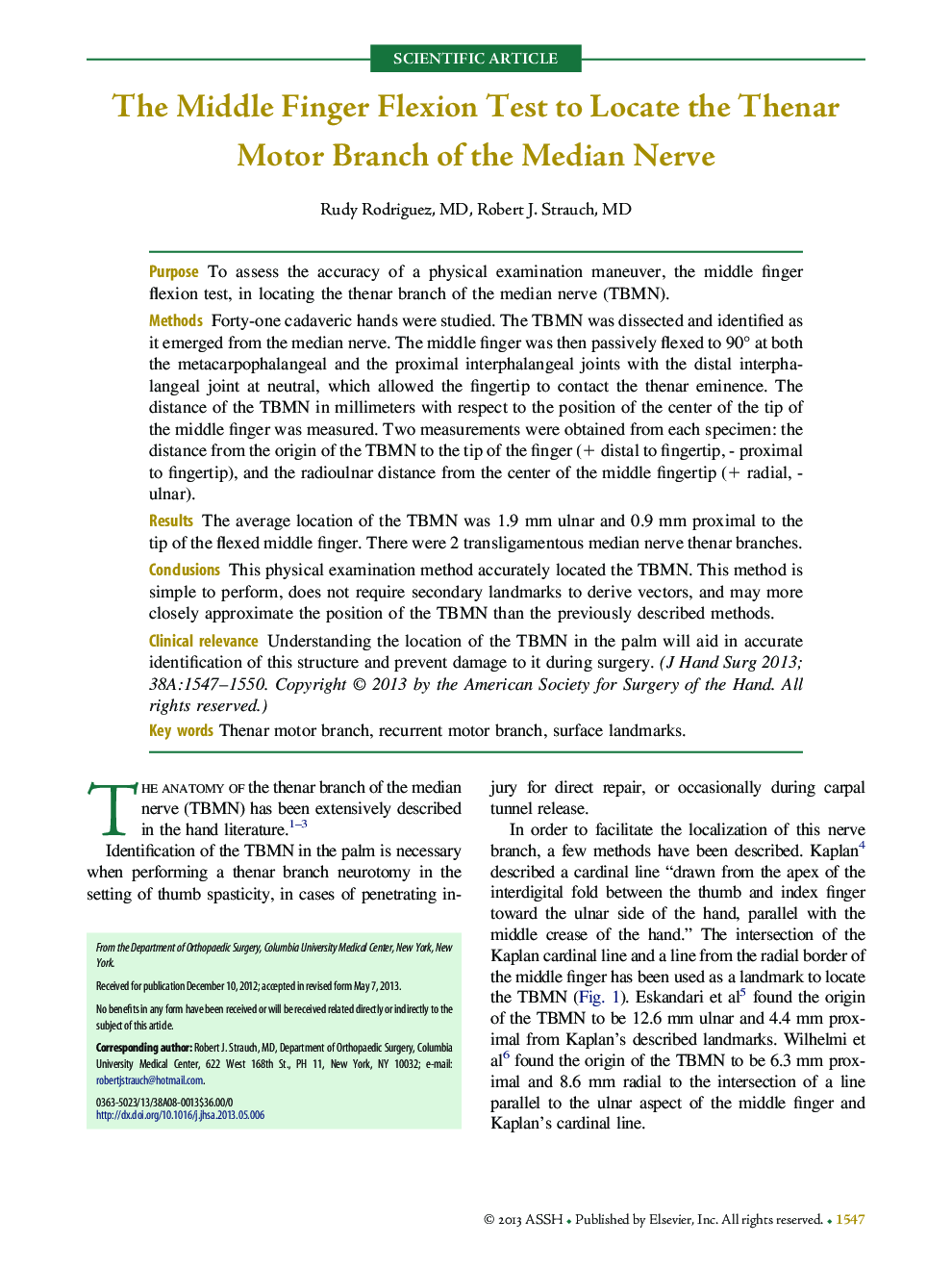| Article ID | Journal | Published Year | Pages | File Type |
|---|---|---|---|---|
| 4069382 | The Journal of Hand Surgery | 2013 | 4 Pages |
PurposeTo assess the accuracy of a physical examination maneuver, the middle finger flexion test, in locating the thenar branch of the median nerve (TBMN).MethodsForty-one cadaveric hands were studied. The TBMN was dissected and identified as it emerged from the median nerve. The middle finger was then passively flexed to 90° at both the metacarpophalangeal and the proximal interphalangeal joints with the distal interphalangeal joint at neutral, which allowed the fingertip to contact the thenar eminence. The distance of the TBMN in millimeters with respect to the position of the center of the tip of the middle finger was measured. Two measurements were obtained from each specimen: the distance from the origin of the TBMN to the tip of the finger (+ distal to fingertip, - proximal to fingertip), and the radioulnar distance from the center of the middle fingertip (+ radial, - ulnar).ResultsThe average location of the TBMN was 1.9 mm ulnar and 0.9 mm proximal to the tip of the flexed middle finger. There were 2 transligamentous median nerve thenar branches.ConclusionsThis physical examination method accurately located the TBMN. This method is simple to perform, does not require secondary landmarks to derive vectors, and may more closely approximate the position of the TBMN than the previously described methods.Clinical relevanceUnderstanding the location of the TBMN in the palm will aid in accurate identification of this structure and prevent damage to it during surgery.
